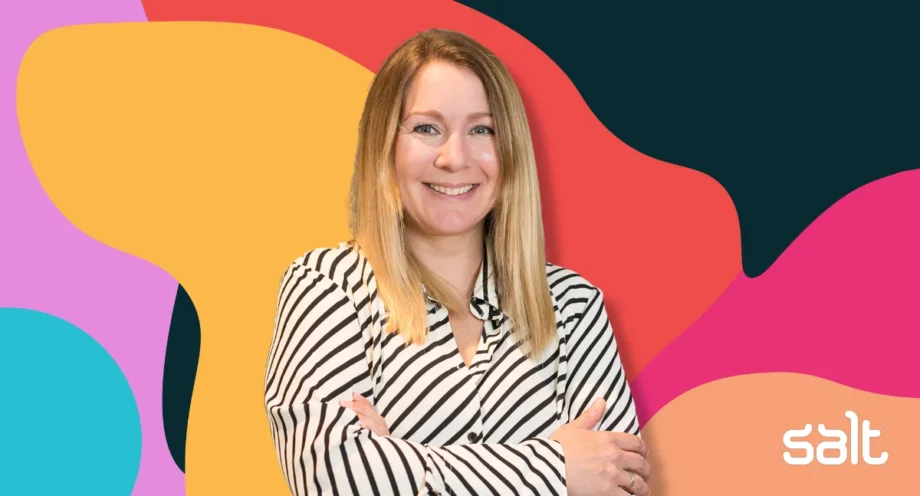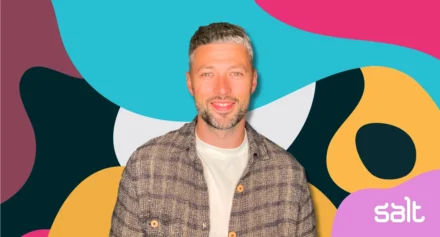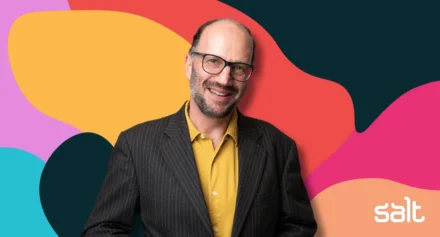Inclusive hiring: from audit to action with Jennie Child, Founder of Balance
Learn how to create lasting positive change to your recruitment processes with Jennie Child, Founder and Director of Balance

Introducing Jennie
Founder and Director of Balance, an inclusive hiring consultancy, who work with employers, recruitment firms, and organisations to help them become intentionally inclusive and bias-free in terms of how they hire and recruit.
What is inclusive hiring?
My definition of inclusive hiring is understanding the layers of barriers that underrepresented and marginalised individuals experience when looking for jobs, and designing and creating solutions and strategies to mitigate bias affecting recruitment outcomes and decisions.
What led you to start Balance?
I spent about 20 years in recruitment before I set up Balance, mainly within the creative media and marketing space.
Around 2015, the advertising and creative industries started to get called out for their lack of progress around inclusion and diversity. I started to focus on inclusion within the company that I worked for, with a certain level of success, but what frustrated me was that I was having to spend too much time convincing people that this was important.
“Inclusive recruitment involves doing things differently. It’s time-consuming, and it’s inconvenient, but it’s completely worth it.”
I set up my own company because if an organisation comes to Balance, they’ve already decided that they need to change, so I’m actually spending my time activating the right strategies, running training, and creating new ways of doing things.
What do you tell clients who are just thinking about starting their journey to inclusive hiring as an organisation?
My first point of call is always to start with an inclusive hiring audit, examining every stage of the recruitment lifecycle.
“I don’t personally believe in starting with the what — the best way is to start with the why.”
That starts with questioning: Why do we have a challenge? Why are we not attracting candidates from underrepresented talent pools? And if we are attracting talented candidates from underrepresented talent pools, why are they not getting hired? Why are they not progressing through our recruitment lifecycle in the way that we would expect them to?
An audit defines the why. Then you can go into the what and the how based on the actual challenges that the company is experiencing, as opposed to a guesstimate.
Are there any strategies or processes you’ve identified that really work for an organisation aiming to hire inclusively?
A simple technique that I advocate for all companies that disrupts bias is bringing different people into your recruitment decision-making process. For instance, in the form of an interview panel.
Typically, when we put panels together, they tend to be a group of individuals from the same function from the same department. In some cases, it might be joint hiring managers. These tend to perpetuate ‘group think’ — where individuals with the same perspective don’t challenge each other.
A simple strategy, but effective, is to make that panel more diverse.
“When I talk about diversity, I’m not talking about optics or selecting from a list of identities, I’m talking about bringing people in with different perspectives and different points of view.“
That may mean that they are different in terms of gender identity, race, and ethnic identity, but it also could just mean that they’re from outside of the department, or they’re earlier in their career. It’s about optimising for diversity of thought.
How do biases and barriers differ for different people in the organisation and how can you start to challenge these effectively?
I think the barriers fall into different buckets, although those buckets overlap.
Attraction: are we an attractive place to work for underrepresented groups?
If you look at that, within the context of race and ethnicity: if I am a Black professional, how attracted am I to an organisation where I don’t see any senior Black role models?
Some organisations are addressing that in a performative way, just filling their website with lots of diversity related content. However, what I think works really well is brutal honesty and authenticity about where they’re at as an organisation, and what they’re doing to address problems they have.
Visibility: are we visible to underrepresented groups?
Are we just fishing in the same place? Is our presence only on LinkedIn or only on Indeed or only on Google? Are we using niche job boards? Are we working with specialist recruitment firms? Are we doing something different that will open that funnel of talent for us?
Bias: are we addressing individual bias and systemic bias?
If an organisation hasn’t addressed biases, then you’ll have individuals that will be interviewing and making hiring decisions that have no understanding of how their own affinity, conformity and confirmation biases influence their recruitment decisions.
They’ll be thinking, I’m hiring the best person for the job. However, the reality is, they’ll be hiring the person that reminds them the most of either themselves or the last person that they hired.
Accessibility: is the recruitment process accessible to everyone?
Disadvantage comes in a number of different forms. It could mean caring responsibilities. It could be socio-economic background. Many organisations don’t even think about the cost that it takes to attend an interview. There’s also accessibility in terms of disability, both physical and invisible.
Companies need to address all four buckets to be successful
If you look at recruitment as a funnel, those different buckets interact at different stages. It starts with visibility and attraction, then accessibility and then biases.
That’s not an exact science, but if you fix one and you haven’t addressed another, then the barriers will just pop up later in the recruitment life cycle.
Listen to this interview now
Why is accessibility important within inclusive hiring?
I recently interviewed somebody who is profoundly deaf and had been looking for a job for 3 years.
If you’re deaf, 99% of applications are not inclusive towards someone with hearing loss. In most application processes, you are forced to put a telephone number down without the opportunity to state your preferred communication method. That immediately places somebody with hearing loss at a disadvantage. If you can’t hear the phone ring, and you don’t have a relay service, then you just miss the opportunity.
If somebody is disabled, whether that’s hidden or visible, they’re at a disadvantage during the recruitment process as most are designed to happen as quickly as possible.
“Speed is always the key metric — with most agencies still tracking time to hire — and that inadvertently discriminates against anybody with a disability.“
To go back to the example of the individual with hearing loss: for somebody with hearing loss to attend an interview, in theory, they also have to arrange their own sign language interpreter. All of this is going to take more time than an able-bodied candidate who can turn up to an interview at a moment’s notice.
Bias is difficult to interrupt — and hard to monitor. How to train bias interruption successfully?
Training I feel is best delivered within the context of the recruitment lifecycle. When I’m training, whether it’s hiring managers or recruiters, we walk through the recruitment lifecycle together and we discuss what happens openly in a psychologically safe environment:
1. What are the different things that trigger bias?
2. What different types of barriers occur at each point of the recruitment lifecycle?
3. How can we then design customised solutions to that based on the industry and the type of function that you’re hiring for?
“You can’t train bias away but you can train bias awareness.”
I think what works best is if people discover those biases themselves, because then there’s a lot more personal accountability to mitigate them.
From a systemic and structural point of view, it’s about understanding organisational factors that could hold you back: How is the company attracting talent? How are they making the process accessible? An individual can make a recruitment process accessible, but really, that should be driven at a company level and should be filtering down to absolutely everybody. It should be a policy.
Do you have a favourite learning moment that changed the way that you work?
I had one just this week! I work in partnership with a tech platform called Diversely, who help companies to debias their recruitment strategies through technology. We do a joint inclusive hiring content series together where we look at a specific underrepresented group and look at how we can specifically make the recruitment process more accessible to that group.
We’re currently researching neurodiversity, and as part of that, I have been interviewing individuals who are neurodivergent, most with ADHD, autism, or both. This week, somebody that I interviewed made me aware of a term called rejection sensitive dysphoria (RSD). It’s essentially emotional pain caused by rejection, something that is very common among neurodivergent people.
This completely opened my eyes. If it’s not something we’re thinking about, then we could be inadvertently putting neurodivergent candidates off applying because of the risk of suffering the anxiety of rejection. If you’re neurodivergent, you are statistically likely to be rejected from more roles than the average person anyway, so the situations exacerbate each other.
From your research, do you have any thoughts about how to balance that fear of rejection in an interview process where placement isn’t guaranteed?
I think, firstly, just creating awareness of RSD. A lot of neurodivergent people are undiagnosed. Diagnosis is a privilege for most people; there will be candidates who aren’t even aware that RSD is something that they suffer from.
What I’d love individuals to start to think about is the role that automation plays in exacerbating RSD, especially in volume recruitment. If you apply for a job, you may get a stock response saying, thanks, we’ve got your CV and we’ll only get back to you if you’re successful. Or you might hear nothing.
“How can we better use that automation to help people that might be sensitive to rejection?“
I’ll give you an example. I was looking after a piece of recruitment for a business-critical hire back in my advertising days for a senior hire. We’d received interest from over 150 individuals, and after two weeks, I realised that it was going to take us a long time to consider all these CVs. I just suddenly thought: Well, why don’t I just tell them that?
I received responses from about 20 different individuals who replied saying that they were blown away as they’ve never received a message like that before and how it had really reassured them that there was a reason why they hadn’t heard back.
Hear more from Jennie
Visit her website balanceandinclusion.com for regular updates and the latest news about inclusive hiring and lots of free resources on her blog.
Sign up for her newsletter — you can subscribe on her LinkedIn profile.

